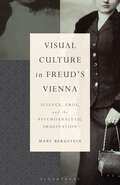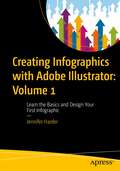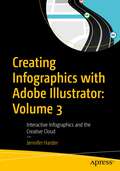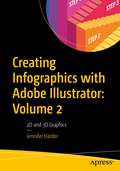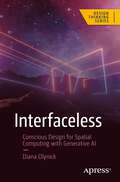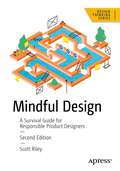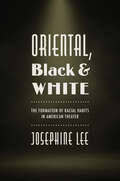- Table View
- List View
The Sound of Silence: Ryan Gosling, Expressionism and the Silent Hero in 21st-Century Film
by Nancy EptonThe Sound of Silence explores how non-verbal communication in film, shown primarily through the acting of Ryan Gosling, provides an expressive space in which passive audience viewing is made more active by removing the expository signifier of dialogue. The German Expressionist era may have been brief, but the shadows cast since its end nonetheless loom large. The silhouetted, cigar-wielding men of film noir and their respectively dark, doom-laden haunts mirror the angst-inducing atmospheres of their forebearers, while also introducing the now-familiar figure of the silent hero. Considering the numerous silent hero actors in film history, there's one that stands out in the 21st century like no other: Ryan Gosling. His later career has seen some of the most iconic silent heroes of the past decade, with films such as Drive, Only God Forgives, Blade Runner 2049 and First Man cementing him as the go-to guy for a monosyllabic, taciturn and moody hero whose actions speak louder than words. This book argues that it is Gosling's expressive capabilities that keep audiences compelled by his performances. With the use of non-verbal silence – combined with its counterbalance, sound – a more active, emotive audience response can be achieved. Looking further into this idea through theorists such as Michel Chion and Susan Sontag, the book demonstrates that the sound of silence is one of the most meaningful cinematic sounds of all.
Visual Culture in Freud's Vienna: Science, Eros, and the Psychoanalytic Imagination (Psychoanalytic Horizons)
by Professor Emerit Mary BergsteinVisual Culture in Freud's Vienna shows how photography and film in turn-of-the-century Vienna (the birthplace of psychoanalysis) not only reflected modernist ideas already in force, but helped to bring into being what might be referred to as a “psychoanalytic imagination.”Mary Bergstein demonstrates that visual images not only illustrated, but also engendered ways of seeing social, psychological, and scientific ideas during a formative time in the creation and development of psychoanalysis and the modern age. Indeed, she argues that visual culture initiated significant aspects of psychoanalytic thought.Visual Culture in Freud's Vienna examines a variety of visual materials and texts, ranging from scientific illustrations to popular "low culture" and even forms of erotica, including film. Attention is also given to women's dresses and shoes in a social context and as they are represented in photography and circulated as fetish objects.Bergstein maintains a commitment to women's history and feminist inquiry throughout, particularly in her final chapter, which is devoted to the representations of women in the erotic photography and film. Visual Culture in Freud's Vienna is well illustrated with images drawn from the sources discussed and makes a significant contribution to our understanding of modernism and psychoanalysis.
Creating Infographics with Adobe Illustrator: Learn the Basics and Design Your First Infographic
by Jennifer HarderThis full-color book will teach you how to use Adobe Illustrator's various tools to create infographics, as well as basic page layouts for them. This is the first of three volumes which will cover all the fundamentals of Illustrator, an industry standard application used by graphic designers and marketing and communication teams. How is an infographic different from a logo or any other illustration? What additional thought processes, skills, or software tools should be utilized to create an infographic? In this first volume of Illustrator Basics, you will learn the answers to all these questions. Author Jennifer Harder will walk you through creating basic infographics in Illustrator using Basic Shape tools, Pen Tools, Type Tools, and Symbols. Upon completing this volume, you will have an appreciation for how easy it is to design an infographic and discover how rudimentary shapes and colors can affect readability while conveying meaning to your audience. You will be able to use this knowledge to create your own infographics using Illustrator’s wide array of tools. Who This Book Is For Discover the tools within Illustrator that are ideal for creating basic infographicsDevelop a logo based upon a scanned sketchGain an understanding of different infographic layouts and the process of reviewing them with your client Who This Book Is For Beginner-level designers and others who are interested in learning the process of creating infographics for their company, the classroom, for a visual resume, an article in a magazine, or a webpage.
Creating Infographics with Adobe Illustrator: Interactive Infographics and the Creative Cloud
by Jennifer HarderThis full-color book, the third of three volumes, focuses on Adobe Illustrator’s SVG interactivity tools. How can an infographic be made more interactive for an audience? What additional Illustrator tools and Adobe applications can be used to enhance your infographic layout? In this final volume of Creating Infographics with Adobe Illustrator, you will learn the answers to all these questions. Author Jennifer Harder will walk you through creating basic infographics in Illustrator using Illustrator tools for creating SVG files, known as Scalable Vector Graphics, for basic Interactivity on a web page. Then you will review layouts in other Adobe Applications in relation to their connectivity with Illustrator. Upon completing this volume, you will have a thorough understanding of how to design an infographic with basic interactivity for a web page, and how this can improve visualization and convey meaning to your audience. Moreover, you will be able to use this knowledge to create your own infographics using Illustrator’s wide array of tools. What You Will Learn Discover how to apply interactivity to an infographicGain insight into different infographic layouts and how to finalize your project with your clientExplore other Adobe Creative Cloud applications that may assist you in the future as you create your infographics Who This Book Is For Beginner-level designers and others who are interested in learning the process of creating infographics for their company, the classroom, for, an article in a magazine, or adding interactivity to webpage.
Creating Infographics with Adobe Illustrator: 2D and 3D Graphics
by Jennifer HarderThis full-color book will teach you how to use Adobe Illustrator's various tools to create infographics, as well as basic page layouts for them. It focuses on Illustrator’s powerful graphing tools and 2D and 3D effects. How can an infographic or graph be altered and adapted to appear more engaging and still display your data accurately? What additional effects can be used on your infographic to produce the results you envision? In this second volume of Creating Infographics with Adobe Illustrator, you will learn the answers to all these questions. Author Jennifer Harder will walk you through creating basic infographics in Illustrator using Illustrator tools such as Graphing Tools as well as how to create 2D effects and 3D shapes with their related materials, including Symbols. Upon completing this volume, you will have an appreciation for how easy it is to design an infographic or graph to display your data and discover how rudimentary shapes and colors can be altered using patterns, as well as 2D and 3D effects, to enhance readability while conveying meaning to your audience. You will be able to use this knowledge to create your own infographics using Illustrator’s wide array of tools. What You Will Learn Use Illustrator’s Graphing Tools to create and modify basic charts or graphsWork with popular 2D effects to enhance your design in IllustratorCreate 3D Shapes using Materials and Symbols and modify your 3D GraphsExplore basic Image Trace and Perspective options in Illustrator Who This Book Is For Beginner-level designers and others who are interested in learning the process of creating infographics for their company, the classroom, for data visualization, an article in a magazine, or a webpage.
Interfaceless: Conscious Design for Spatial Computing with Generative AI (Design Thinking)
by Diana OlynickExplore the possibilities spatial computing and its integration with AI can provide beyond the confines of a traditional user interface. Spatial computing brings together physical and virtual worlds and systems. This book offers an insightful journey into harmonizing user-centered design with the vast potential of AI in spatial computing. You'll start by exploring key concepts and processes in relation to conscious design and traditional computer interfaces. You'll then be introduced to the Mindful Spatial Design Framework (MSDF) and the rapidly evolving world of generative AI and its potential to transform design processes.Once the key concepts are mastered, you'll start to put them into practice and see how to design, prototype, and test interfaceless systems and environments that are seamless and user-friendly. In doing so you'll consider topics such as functionality and aesthetics, as well as how AI can improve automation and testing. The book concludes by looking at ethical AI considerations and best practices as well as looking at next steps and future developments of spatial computing and interfaceless design. As these invisible interfaces become more prevalent, understanding the key principles of conscious design is pivotal. Interfaceless will expand your knowledge base in these areas. What You'll LearnIncorporate conscious design principles in spatial computing projects.Leverage AI to enhance UX in spatial contexts.Develop strategies to address design challenges as we move beyond physical interfaces.See how VR/XR apps, devices, and generative AI are rapidly changing how we perceive and interact with the digital realm.Who This Book Is ForUX/UI designers, developers, and tech enthusiasts eager to grasp the future of HCI.
Mindful Design: A Survival Guide for Responsible Product Designers (Design Thinking)
by Scott RileyLearn to create seamless designs backed by a responsible understanding of the human mind. This new edition is fully updated and reworked to employ a realistic, challenging, and practical approach to interface design, presenting state of the art scientific studies in behavioral sciences, interface design and the psychology of design. All with modern, up-to-date examples and screenshots. The practical portion of this edition has been completely reworked, giving you the chance to follow along with a real, proven design process that has produced several successful products imbued with the principles of mindful, responsible design.You'll examine how human behavior can be used to integrate your product design into lifestyle, rather than interrupt it, and make decisions for the good of those that are using your product. You will also learn about the neurological aspects and limitations of human vision and perception; about our attachment to harmony and dissonance; and about our brain’s propensity towards pattern recognition and how we perceive the world around us. In the second half of the book, you’ll follow along with the key phases of a design project, implementing what you have learned in an end-to-end, practical setting. Design is a responsibility, but not enough designers understand the human mind or the process of thought. Mindful Design, Second Edition introduces the areas of brain science that matter to designers, and passionately explains how those areas affect each human’s day-to-day experiences with products and interfaces, providing a battle-tested toolkit to help you make responsible design decisions. What You'll Learn Review how attention and distraction work and the cost of attentional switchingUse Gestalt principles to communicate visual groupingEnsure your underlying models make sense to your audienceUse time, progression, and transition to create a compositionCarefully examine controlling behavior through reductionist and behaviorist motivation concepts Apply the theoretical knowledge to practical, mindful interface design Who This Book Is For The primary audience for this book is professional designers who wish to learn more about the human mind and how to apply that to their work. The book is also useful for design-focused product owners and startup founders who wish to apply ethical thinking to a team, or when bootstrapping their products. The secondary audience is design students who are either studying a ‘traditional’ visual design course, or a UX/interaction design course who have a desire to learn how they might be able to apply mindful design to their early careers. Finally, a tertiary audience for this book would be tutors involved in teaching design, or peripheral, courses who may wish to incorporate its teachings into their lectures, workshops or seminars.
Oriental, Black, and White: The Formation of Racial Habits in American Theater
by Josephine LeeIn this book, Josephine Lee looks at the intertwined racial representations of nineteenth- and early twentieth-century American theater. In minstrelsy, melodrama, vaudeville, and musicals, both white and African American performers enacted blackface characterizations alongside oriental stereotypes of opulence and deception, comic servitude, and exotic sexuality. Lee shows how blackface types were often associated with working-class masculinity and the development of a nativist white racial identity for European immigrants, while the oriental marked what was culturally coded as foreign, feminized, and ornamental. These conflicting racial connotations were often intermingled in actual stage performance, as stage productions contrasted nostalgic characterizations of plantation slavery with the figures of the despotic sultan, the seductive dancing girl, and the comic Chinese laundryman. African American performers also performed common oriental themes and characterizations, repurposing them for their own commentary on Black racial progress and aspiration. The juxtaposition of orientalism and black figuration became standard fare for American theatergoers at a historical moment in which the color line was rigidly policed. These interlocking cross-racial impersonations offer fascinating insights into habits of racial representation both inside and outside the theater.

